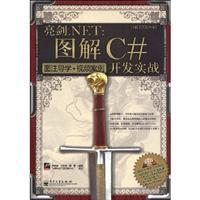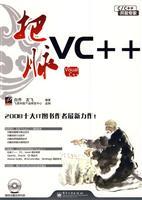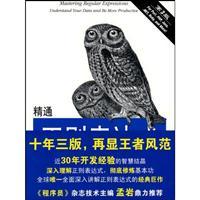electronic industry publishing house pub date 2009 7 1 (4 risultati)
Tipo di articolo
- Tutti gli articoli
- Libri (4)
- Riviste e Giornali
- Fumetti
- Spartiti
- Arte, Stampe e Poster
- Fotografie
- Mappe
-
Manoscritti e
Collezionismo cartaceo
Condizioni
- Tutte
- Nuovi
- Antichi o usati
Legatura
- Tutte
- Rilegato
- Brossura
Ulteriori caratteristiche
- Prima edizione
- Copia autografata
- Sovraccoperta
- Con foto (3)
- No print on demand
Paese del venditore
Valutazione venditore
-
New electronic information planning of vocational education in the 21st century textbook in mechatronics technology: motor and electrical control (2)(Chinese Edition)
Editore: Electronic Industry Publishing House Pub. Date :2009-7-1, 2000
ISBN 10: 7121066114ISBN 13: 9787121066115
Da: liu xing, Nanjing JiangSu, JS, Cina
Libro
paperback. Condizione: New. Paperback. Pub Date: 2008 08 Pages: 346 Language: Chinese in Publisher: Publishing House of Electronics Industry 5 Chapter 15. an organic combination of motor learning. electric drive. electrical control three courses content. The DC motor and drag in layman's language. structure and principle of transformer. three-phase induction motor and drag. the basic principle of the single-phase induction motor; It also presents a synchronous motor. control motor characteristics. asynchronous motor Com.
-
Graphical C development combat - Sword. NET-Legend Guidance Video Case - with video DVD1 Zhang
Editore: Electronic Industry Publishing House Pub. Date :2009-7-1, 2009
ISBN 10: 7121087731ISBN 13: 9787121087738
Da: liu xing, Nanjing JiangSu, JS, Cina
Libro
paperback. Condizione: New. Ship out in 2 business day, And Fast shipping, Free Tracking number will be provided after the shipment.Pages Number: 572 Publisher: Electronic Industry Press. Pub. Date :2009-7-1. This book uses a new graphic ideas. sub-3 describes the development using the Microsoft c # language the basics of practical applications. Section 1 includes 10 chapters. describes the c # language basics. mainly on the c # frame structure. use. basic grammar and basic development process; Part 2 includes seven chapters. describes seven kinds of common examples of the development process. the main a video player. drawing board. e-mail his assistant. simple banking system. student management systems. electronic seal. press releases system; Section 3 contains three chapters. describes the c # project development specifications and three-tier architecture. mainly on the c # standard three-tier project development and the basics. and shows two examples of the comprehensive development process. Book is structured. comprehensive and in-depth. degree of difficulty step by step. in line with the general reader to learn the knowledge of the process. To enhance the reader's learning. the book of screenshots and procedures using a new Legend mode. map and program notes on the main description of the knowledge points. corresponding to the relationship and level of order. so that readers glance Live vital and grasp the knowledge context. In addition. supporting the dvd disc contains multi-media teaching and learning to help the reader provides the first scene reproduction. This book is comprehensive. progressive approach. the use of layers of knowledge and examples to explain the decomposition method is very suitable for a certain application development foundation. ready to learn c # c # programming. or want to improve the programming skills of the reader. but also as institutions of higher learning related to professional teacher health reference books. Contents: Part 1 Chapter 1 Basics chapter outlines 3C # C # is developed by Microsoft. a new object-oriented programming language. it is as powerful and CC. and Java as programming to provide extensive support network. and automatic memory management . and VB as easy to use. Knowledge point of object-oriented programming (OOP). C # language. anecdotes. C # development environment. a simple C # program examples of difficult C # development environment to build a simple C # program development method video tutorials created the C # environment installed. C # Programming Example 1.2 C # Language origin a bit helpless 61.2.2 61.2.1 anecdotes source in C and C 61.2.3 C # and Java difference 71.3 C # development environment 71.3.1 Visual Studio 2005 C # installed 81.3.2 MSDN installation 101.3.3 Visual Studio 111.4 2005 C # using simple C # console application program example 141.4.1 141.4.2 WinForm sample application sample application example 161.4.4 151.4.3 Web site library program example 171.5 Summary 19 Chapter 2 C # language-based 21 This chapter introduces the basics of C # language. Include: variables and constants. expressions. various control statements. and object-oriented structure of the relevant content. Knowledge point constants and variables. operators. flow control statements. complex types. data types. pre-and difficult to understand. process control. pre-video tutorial loops. jump statements. operators. saying that C # 222.2 pre-2.1 data types value type inheritance and development 222.2.1 262.3 222.2.2 single reference type elements - variables and constants named 272.3.2 272.3.1 variable variable variable scope declarations 272.3.3 282.3.4 292.3.5 variable modifiers constant connection element 312.4 - 312.4.1 Operators Arithmetic Operators Assignment Operators 322.4.2 332.4.3 332.4.4 other operator operator precedence relations such statement can perform 362.5 - Process control 372.5.1 conditional statements 372.5.2 402.5.3 loops jump statements 432.6 extension elements - a complex type of enume.
-
Pulse VC - with CD-ROM 1
Editore: Electronic Industry Publishing House Pub. Date :2009-7-1, 2000
ISBN 10: 7121086174ISBN 13: 9787121086175
Da: liu xing, Nanjing JiangSu, JS, Cina
Libro
paperback. Condizione: New. Ship out in 2 business day, And Fast shipping, Free Tracking number will be provided after the shipment.Pages Number: 663 Publisher: Electronic Industry Press. Pub. Date :2009-7-1. This book focuses on the key technical visual c. visual c programmer that works in practice often encountered in the development of several major issues: data memory expression. data conversion and processing. data persistence. data display interface. data transmission and exchange of technology. The book contents include: the development of technical software projects on the topic of visual c. the expression of common objects. the object of the assignment and conversion. object container. use the file access object. use the registry to access the object. using the database access object . interface layout. interface and interactive mapping. interface landscaping. the transfer process between the object and calls the thread and call transfer between objects. modules. and call transfer between objects. the transmission network between the object and call the other. By studying this book can help readers to quickly grasp the visual c programming techniques and programming ideas. The book with the book accompanying CD-ROM contains example source files. This book is for beginning and intermediate readers. for the majority of those who want to learn visual c readers. but also relevant professional institutions of higher learning for teachers and students as a reference. but also as materials related to training institutions. Contents: Section 1 visual c Glance Chapter 1 in a software project development technology 1.1 1.2 on the topic of software project development process of software project development process 1.2.2 1.2.1 software debugging (debug) 1.2.3 prototype ( prototype) 1.2.4 Reconstruction (refactor) 1.3 software layered software architecture and software architecture principles 1.3.1 and 1.3.2 cs bs mode 1.3.3 mvc model view architecture 1.3.5 1.3.4 Document the popular three-tier structure 1.4 visual c project in the four main vein object modeling technique and expression 1.4.1 1.4.2 1.4.3 persistent object object object's interface to show the transfer and call 1.4.4 from 1.4.5 and msn qq Speaking of the four technical and three-layer structure 1.4.6 1.5 1.5.1 management system back to the inn object modeling and object persistence expressed 1.5.2 1.5.3 1.5.4 show the object's interface objects and call transport 1.6 Summary Chapter 2 on the topic of visual c 2.1 visual c and c 2.1.1 visual c is not the only c compiler 2.1.2 visual c is not the only c ide 2.1.3 visual c and mfcatl version 2.1.4 controversial visual c 2.1.5 visual c and boost. qt 2.2 familiarity visual c ide 2.2.1 files. projects and solutions 2.2.2 visual c code editor 2.2.3 visual c Resource Editor 2.2.4 visual c Application Wizard 2.2.5 visual c 2.3 debugger from visual c programming 2.3.1 dev-c 2.3.2 2.3.3 windows console application procedures for the preparation of the preparation of 2.4 using visual c programming 2.4.1 win32 console application 2.4.2 to support the preparation of mfcatl 2.4.3 win32 console application window procedures for the preparation 2.4.4 mfcatl preparation 2.4.5 clr application procedures for the preparation of n 2.5 fennel kind of written word to use windows api 2.5.2 use 2.5.1 c standard library (stdcpp) 2.5.3 using crt (c runtime library) 2.5.4 uses crt library to use wide-character version 2.5.5 version 2.5.6 security crt library use mfcatl 2.5.7 using c cli 2.5.8 The wording of what kind of partner 2.6.1 2.6 visual c source code 2.6.2 msdn and msdn library 2.6.3 visual studio tools 2.6.4 visual assist x 2.6.5 visual c 2.7 Summary resource site visual c in the first two object modeling and object expression in Chapter 3. the expression of common objects in Chapter 4 assignment and conversion to Chapter 5 Section 3 object container objects in visual c persistence use Chapter 6 Chapter 7 object file access using registry Chapter 8 Access data.
-
Mastering Regular Expressions - Version 3(Chinese Edition)
Editore: Electronic Industry Publishing House Pub. Date :2009-7-1, 2009
ISBN 10: 7121046849ISBN 13: 9787121046841
Da: liu xing, Nanjing JiangSu, JS, Cina
Libro
paperback. Condizione: New. Ship out in 2 business day, And Fast shipping, Free Tracking number will be provided after the shipment.Pages Number: 515 Publisher: Electronic Industry Press. Pub. Date :2009-7-1. Contents: Preface Chapter 1 Introduction to regular expressions to solve real problems as the programming language of regular expressions in file names analogy analogy to regular languages expression frame of mind experience for some readers to retrieve a text file: EgrepEgrep per character line starting and ending character set matches any character with a dot structure of multiple-choice word delimiter Summary ignore case option elements other quantifiers: repeat appear in parentheses and back references to expand basic knowledge of magical escape regular expression language differences goals more examples of regular expressions to improve the status quo term summary statements of a summary in Chapter 2 Getting Started example to expand on these examples use Perl regular expressions simple entry match the text to match the practical success of the program ahead of the side effects of complex regular expression pause to use regular expressions to modify the text example: letter generating program example: trimming the stock price of edits automatically handle mail gadget to a value with a comma surveying functions Text-to-HTML conversion word to repeat the question back to Chapter 3 of the regular expression features and an overview of schools in the world of regular walking is the first impression is the origin of the expression regular expression handling precautions and integrated processing Processing processing and object-oriented style in other languages ??Find and Replace find and replace notes and treatment: summary of the string. character encoding and matching model as a regular expression string is the Unicode character encoding model and pattern matching metacharacters used and features the character set and character representation and other related structures anchor zero-length assertion Notes and pattern classifier group. capture. and control conditions to determine the guide Chapter 4 Advanced Topics: expression matching principle to start the engine of new types of engines standards are the engines of classification digress test engine based on the example of the type of match rule 1: the left-most priority to the construction of the engine matches Rule 2: Standard quantifier is an expression matching the dominant priority-led NFA engine with the text: Expression leading DFA engine type: text dominated the first idea: To compare the NFA and DFA back in the real world example: bread crumbs back to back with two match points standby priority priority and backtracking on match more characters match the priority of problems Citation Use ignore quantifiers match priority and neglected priorities are to receive the match match first. ignore the priorities and thrust back the possession of quantifiers and curing group occupies quantifiers. *. and {m. n} look around the back multiple choice structure match the priority it is to explore the value of the structure of ordered multiple choice NFA. DFA. and POSIX POSIX rules up to the most left and most left up to the speed and efficiency of the summary rules: NFA and DFA Comparison Summary Chapter 5: regular expressions and practical skills balance of the regular expression matching rules simple example of a continuous number line (continued) deal with the file name matches the IP address matches the symmetry of the brackets do not expect the match to prepare for matches within the text delimiter to understand data. make assumptions about the beginning and end of the text to remove HTML-related example of matching whitespace characters HTMLTag match HTMLLink check HTTPURL verify the host name in the real world examples to extract the URL extension to maintain the coordination of data parsing CSV file Chapter 6: create a typical example of efficient regular expression slightly modified - the f.





